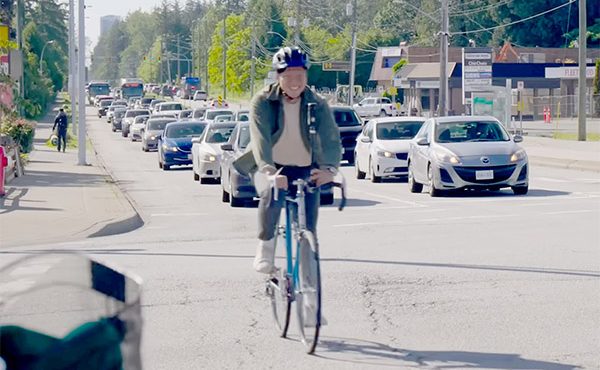TheTransitFan takes us through the goings-on at the TransportCamp: A Sustainable Transportation Unconference that took place last Friday, October 30th, 2009 at BCIT.
By TheTransitFan, re:place magazine
“Transportation” and “fun” don’t usually find themselves together in the same sentence. But for the 120 people who attended TransportCamp last week, a full day discussing transportation issues was not only informative, but pretty darn entertaining.
TransitFan had not been to camp since a memorable overnight stay with his Grade 7 class. Back then, marshmallows were roasted, horses were ridden, and trails were hiked, and fun was had. So the organizers of last Friday’s TransportCamp had the right idea. Camp is fun. Transportation can be fun too, as long as you combine interested people with an environment conducive to discussion.
TransportCamp took place at BCIT’s downtown campus under the theme of “How can transportation be a catalyst for building more vibrant communities in the Lower Mainland?” This unconference was organized by the Co-operative Auto Network, a Vancouver not-for-profit cooperative whose mandate is to “raise awareness about the benefits of sharing cars over private ownership.” The big selling feature of an unconference is that while sessions are facilitated, the event is participant driven: We decided collectively what we would like to discuss. The participants were a diverse and well-informed group, including employees of the City of Vancouver, Translink, and sustainability organizations, as well as planning professionals, engineers, students, transportation consultants, architects, cycling and pedestrian advocates, and community activists.
After a brief introduction on how the unconference would work, we broke into four groups where we looked ahead 20 years and 40 years to visualize the future of transportation. My group had a wide-ranging discussion, but some common themes emerged:
- A pedestrian-centred transportation system is needed in Metro Vancouver
- The intermediate mode between rapid transit and the automobile is lacking; ride share may be one answer
- Better neighbourhood transportation needs to be developed, that allows residents to get around their community, not just to downtown
- Public transit should provide good service to the centres of our communities: Hospitals, community centres, churches, shopping centres
- Transportation modes must be better integrated
- Not owning a car needs to be made easier, especially for those with children
- Surface movement needs to be for people, not cars; public transit on the streets, not above or below ground
One point that really hit home for me was that when looking at transportation options, people per hour should be the measure rather than vehicles per hour. How many people per hour are crossing the Lion’s Gate Bridge by bus and how many are in private vehicles? Priority needs to be given to the more efficient mode.
We then contributed ideas for the next three sessions of the day, ending up with about 24 sessions in total. We could choose any session we wanted, and leave at any time if it wasn’t to our liking. The fact that we all chose topics nearest and dearest to our hearts meant that there was minimal movement between groups. I participated in conversations about transit options for the Broadway corridor, sustainable transportation in the suburbs, and transit oriented development. In each session one person was chosen to lead the discussion and all the ideas were written down on big sheets of paper, with summaries to be sent later to all the participants.
After the sessions were finished, Gordon Price of SFU’s City Program wrapped up by applauding our efforts but also addressing two big issues that we did not discuss: The first was to think about how to pay for a multimodal transportation system for our region. The second issue was the need to build coalitions in order to push for sustainable transportation. He noted that the the provincial government’s auto- and truck-centric Gateway Program was initiated by the BC Trucking Association, and had been very successful in its own coalition building efforts.
TransportCamp was a great opportunity to meet other like-minded people who share a goal of improving our transportation system with more sustainable modes. In terms of building a sustainable transportation coalition for the Lower Mainland, however, it was just the beginning.
**
John Calimente is the president of Rail Integrated Developments. He supports great mass transit, cycling, walking, transit integrated developments, and non-automobile urban life. Click here to follow TheTransitFan on Twitter.



